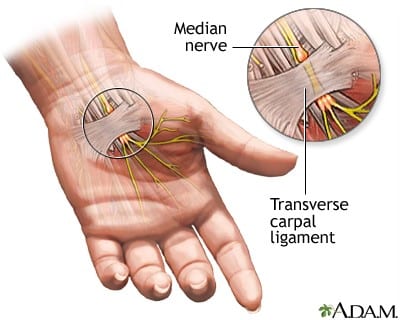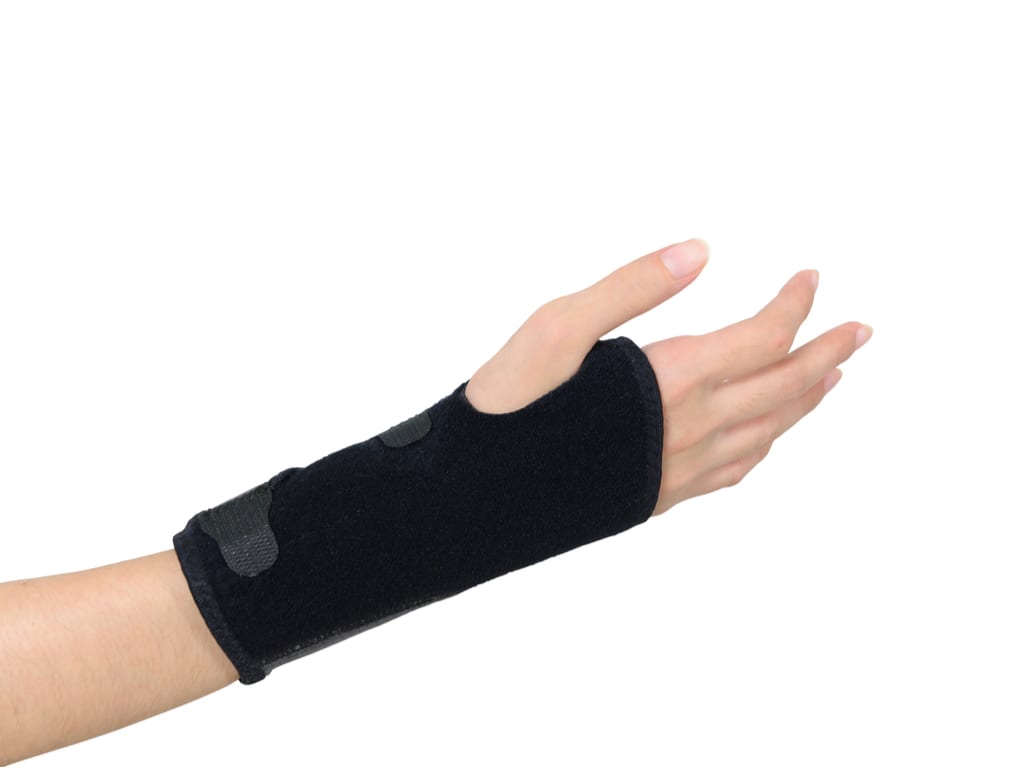The carpal bones are the bones located within the wrist. These small bones are connected via ligaments and connective tissue.
The structure of the wrist creates a tunnel-like passage within the wrist joint known as the carpal tunnel. The carpal tunnel allows structures such as tendons and nerves to pass through the wrist joint.
Pain arises when the carpal tunnel narrows and compresses those structures inside the tunnel. Narrowing can occur for many reasons such as tendon damage, swelling in the carpal tunnel (common in pregnancy) or overuse of the forearm flexor muscles. Occasionally the median nerve may also become compressed causing pain in the wrist or hand.

What are the symptoms of carpal tunnel syndrome?
Symptoms usually develop gradually over time. Initially symptoms may present as an ache in the wrist and hand. As the condition progresses, pain, pins and needles, numbness or a burning sensation may be felt with every day activities. Numbness in the hand & fingers may also be present as well as weakness. Patients may have difficulty performing fine movements of the hand and may find they keep dropping objects.
How can physiotherapy help?
Early physiotherapy is vital to hasten the healing process. Physiotherapy may include soft tissue massage as well as bracing or splinting to help rest your joint. Mobilisations (stretching) to your wrist joint as well as acupuncture are very effective in the treatment of carpal tunnel by increasing the amount of space within the carpal tunnel, alleviating pressure of the carpal tunnel structures. We can also provide advice for inflammation management and activity modifications. A programme may also be advised to return slowly back to activity, increasing flexibility or strength to the region.

